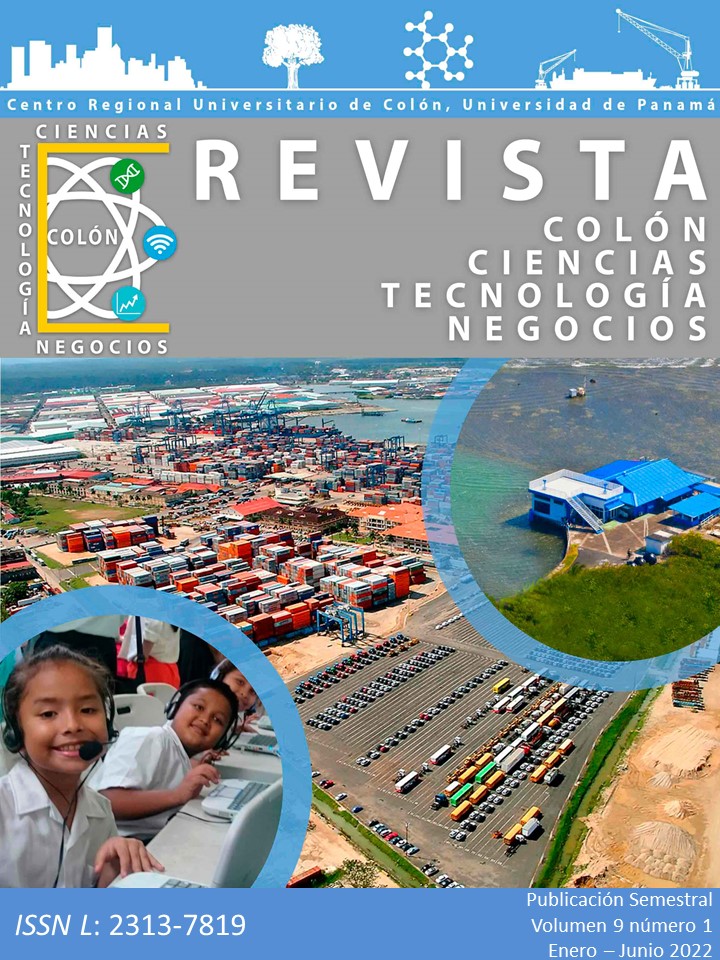
Artículos
Vol. 9 No. 1 (2022): Revista Colón Ciencias, Tecnología y Negocios

Este obra está bajo una licencia de Creative Commons Reconocimiento-NoComercial-CompartirIgual 4.0 Internacional.
In this study, the effect of extracellular polymeric substances (EPS), immobilized on a sodium alginate support, on the concentration of lead (Pb2+), chromium (Cr4+) and copper (Cu2+) present in a synthetic aqueous matrix was evaluated. The highest total carbohydrate concentration in EPS was 42.72 ± 0.17 ug/L of the E6 strain. The EPS immobilized beads had increasing moisture values as a function of increasing concentration. The highest removal of contaminants was achieved with the EPS obtained from the strain M2-3, with a concentration of 15% (removal = 98.97% Pb2+, 98.05% Cr4+ and 97.25% Cu2+) and an adsorption capacity of the heavy metal of 0.240 mg / g (PS) for Pb2+, 0.237 mg/g (PS) Cr4+ and 0.471 mg/g (PS) Cu2+. These findings demonstrate the great potential of the beads with immobilized EPS, for their use as a biosorbent in the treatment of water contaminated with heavy metals.
Este obra está bajo una licencia de Creative Commons Reconocimiento-NoComercial-CompartirIgual 4.0 Internacional.
